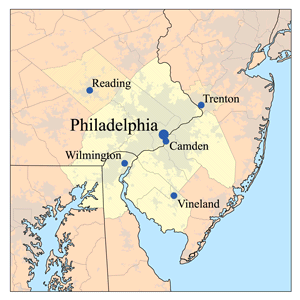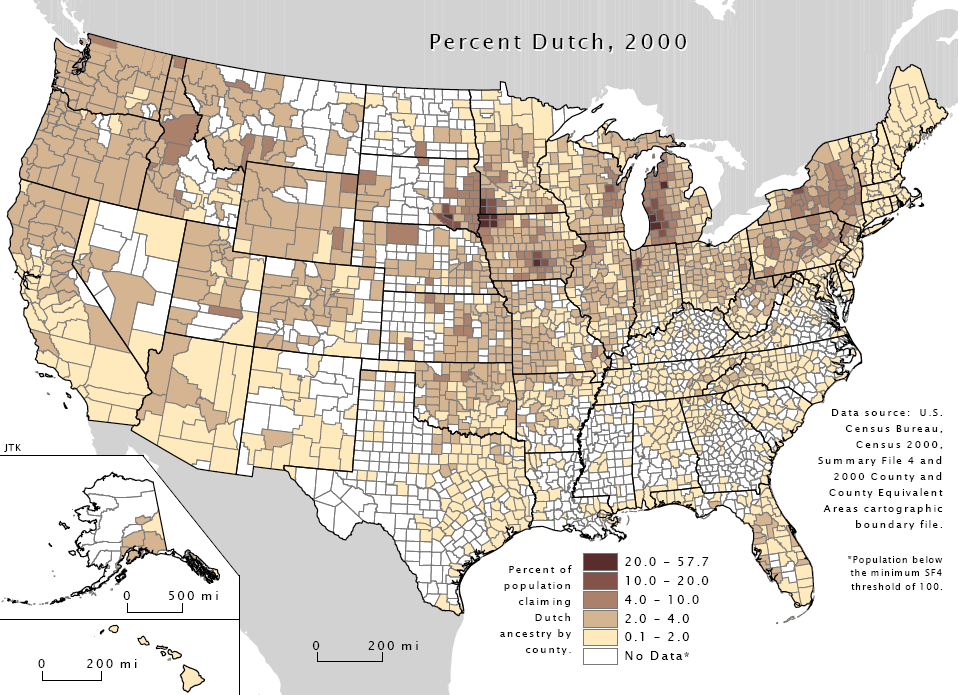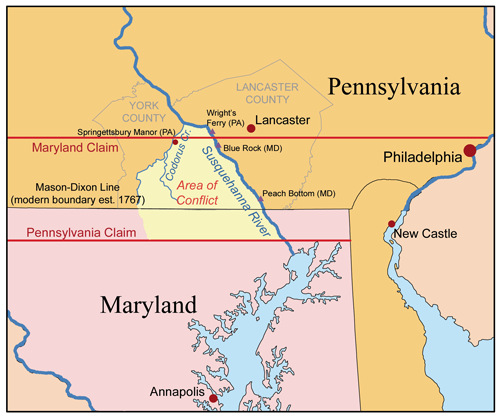|
1st Continental Regiment
The 1st Pennsylvania Regiment - originally mustered as the 1st Pennsylvania Rifles; also known as the 1st Continental Line and 1st Continental Regiment, was raised under the command of Colonel William Thompson for service in the Continental Army. History The Congressional resolution of June 14, 1775, authorized ten companies of expert riflemen to be raised for one-year enlistments as Continental troops. Maryland and Virginia were to raise two companies each, and Pennsylvania six. Pennsylvania frontiersman, however were so eager to participate that on June 22 Pennsylvania's quota of two was increased to eight, organized as a regiment known as the "Pennsylvania Rifle Regiment." A ninth company was added to the regiment on July 11. All thirteen companies were sent to Washington's army at Boston for use as light infantry and later as special reserve forces. Seven companies of the regiment (1st, 2nd, 3rd, 4th, 5th, 8th, and 9th) were made up of Scotch-Irish, Germans, Welsh, Man ... [...More Info...] [...Related Items...] OR: [Wikipedia] [Google] [Baidu] |
Continental Congress
The Continental Congress was a series of legislative bodies, with some executive function, for thirteen of Britain's colonies in North America, and the newly declared United States just before, during, and after the American Revolutionary War. The term "Continental Congress" most specifically refers to the First and Second Congresses of 1774–1781 and, at the time, was also used to refer to the Congress of the Confederation of 1781–1789, which operated as the first national government of the United States until being replaced under the Constitution of the United States. Thus, the term covers the three congressional bodies of the Thirteen Colonies and the new United States that met between 1774 and 1789. The First Continental Congress was called in 1774 in response to growing tensions between the colonies culminating in the passage of the Intolerable Acts by the British Parliament. It met for about six weeks and sought to repair the fraying relationship between Britain and t ... [...More Info...] [...Related Items...] OR: [Wikipedia] [Google] [Baidu] |
Light Infantry
Light infantry refers to certain types of lightly equipped infantry throughout history. They have a more mobile or fluid function than other types of infantry, such as heavy infantry or line infantry. Historically, light infantry often fought as Reconnaissance, scouts, Raid (military), raiders, and skirmisher, skirmishers. These are loose formations that fight ahead of the main army to harass, delay, disrupt supply lines, engage the enemy’s own skirmishing forces, and generally "soften up" an enemy before the main battle. Light infantrymen were also often responsible for Screening (tactical), screening the main body of a military formation. Post-World War II, the term "light infantry" evolved to include rapid-deployment units (including commandos and Airborne forces, airborne units) that emphasize speed and mobility over armor and firepower. Some units or battalions that historically held a skirmishing role have kept their designation "light infantry" for the sake of traditi ... [...More Info...] [...Related Items...] OR: [Wikipedia] [Google] [Baidu] |
British Army
The British Army is the principal land warfare force of the United Kingdom, a part of the British Armed Forces along with the Royal Navy and the Royal Air Force. , the British Army comprises 79,380 regular full-time personnel, 4,090 Gurkhas, and 28,330 volunteer reserve personnel. The modern British Army traces back to 1707, with antecedents in the English Army and Scots Army that were created during the Restoration in 1660. The term ''British Army'' was adopted in 1707 after the Acts of Union between England and Scotland. Members of the British Army swear allegiance to the monarch as their commander-in-chief, but the Bill of Rights of 1689 and Claim of Right Act 1689 require parliamentary consent for the Crown to maintain a peacetime standing army. Therefore, Parliament approves the army by passing an Armed Forces Act at least once every five years. The army is administered by the Ministry of Defence and commanded by the Chief of the General Staff. The Brit ... [...More Info...] [...Related Items...] OR: [Wikipedia] [Google] [Baidu] |
Musket
A musket is a muzzle-loaded long gun that appeared as a smoothbore weapon in the early 16th century, at first as a heavier variant of the arquebus, capable of penetrating plate armour. By the mid-16th century, this type of musket gradually disappeared as the use of heavy armour declined, but ''musket'' continued as the generic term for smoothbore long guns until the mid-19th century. In turn, this style of musket was retired in the 19th century when rifled muskets (simply called rifles in modern terminology) using the Minié ball (invented by Claude-Étienne Minié in 1849) became common. The development of breech-loading firearms using self-contained cartridges (introduced by Casimir Lefaucheux in 1835) and the first reliable repeating rifles produced by Winchester Repeating Arms Company in 1860 also led to their demise. By the time that repeating rifles became common, they were known as simply "rifles", ending the era of the musket. Etymology According to the Online Et ... [...More Info...] [...Related Items...] OR: [Wikipedia] [Google] [Baidu] |
Long Rifle
The long rifle, also known as the longrifle, Kentucky rifle, Pennsylvania rifle, or American longrifle, a muzzle-loading firearm used for hunting and warfare, was one of the first commonly-used rifles. The American rifle was characterized by a very long barrel of relatively small caliber, uncommon in European rifles of the period. The long rifle is an early example of a firearm using rifling (spiral grooves in the bore), which caused the projectile, commonly a round lead ball in early firearm, to spin around the axis of its motion. This increased the stability of its trajectory and dramatically improved accuracy over contemporary smooth-bore muskets, which were cheaper and more common. Rifled firearms were first used in major combat in the American colonies in the eighteenth century during the French and Indian War, and later the American Revolution, with increasing use in the War of 1812, Texan Revolution, and American Civil War. The main disadvantages of muzzle-loading rifle ... [...More Info...] [...Related Items...] OR: [Wikipedia] [Google] [Baidu] |
Northampton County, Pennsylvania
Northampton County is a county in the Commonwealth of Pennsylvania. As of the 2020 census, the population was 312,951. Its county seat is Easton. The county was formed in 1752 from parts of Bucks County. Its namesake was Northamptonshire, England. The county seat of Easton was named for the country house Easton Neston in that shire. Northampton County and Lehigh County to its west combine to form the eastern Pennsylvania region known as the Lehigh Valley, and both counties are included in the Philadelphia media market, the nation's fourth largest media market. Lehigh County, with a population of 374,557 of the 2020 U.S. census, is the more highly populated of the two counties. Northampton County is industrially oriented, producing cement and other industrial products. It was a center for global cement production with the world's then-largest cement producer Atlas Portland Cement Company operating in the county for nearly a century from 1895 until 1982. Bethlehem Steel, on ... [...More Info...] [...Related Items...] OR: [Wikipedia] [Google] [Baidu] |
Berks County, Pennsylvania
Berks County ( Pennsylvania German: ''Barricks Kaundi'') is a county in the Commonwealth of Pennsylvania. As of the 2020 census, the population was 428,849. The county seat is Reading. The Schuylkill River, a tributary of the Delaware River, flows through Berks County. The county is part of the Reading, PA metropolitan statistical area (MSA), which is included in the Philadelphia-Reading- Camden, PA- NJ- DE- MD combined statistical area (CSA). History Reading developed during the 1740s when inhabitants of northern Lancaster County sent several petitions requesting that a separate county be established. With the help of German immigrant Conrad Weiser, the county was formed on March 11, 1752, from parts of Chester County, Lancaster County, and Philadelphia County. It was named after the English county in which William Penn's family home lay, Berkshire, which is often abbreviated to Berks. Berks County began much larger than it is today. The northwestern parts of the ... [...More Info...] [...Related Items...] OR: [Wikipedia] [Google] [Baidu] |
Dutch American
Dutch Americans ( nl, Nederlandse Amerikanen) are Americans of Dutch descent whose ancestors came from the Netherlands in the recent or distant past. Dutch settlement in the Americas started in 1613 with New Amsterdam, which was exchanged with the English for Suriname at the Treaty of Breda (1667) and renamed New York City. The English split the Dutch colony of New Netherland into two pieces and named them New York and New Jersey. Further waves of immigration occurred in the 19th and 20th centuries. Prominent (partial) Dutch American political figures include Presidents Martin Van Buren, Warren G. Harding, and Theodore and Franklin D. Roosevelt and U.S. Senators Philip Schuyler, Nicholas Van Dyke, Hamilton Fish, John C. Ten Eyck, Daniel W. Voorhees, Arthur Vandenberg, Peter G. Van Winkle, Alan Simpson, Fred Thompson, John Hoeven, and Christopher Van Hollen. Two of the Founding Fathers of the United States, Egbert Benson and John Jay, were also of Dutch descent. Governors ... [...More Info...] [...Related Items...] OR: [Wikipedia] [Google] [Baidu] |
Lancaster County, Pennsylvania
Lancaster County (; Pennsylvania Dutch: Lengeschder Kaundi), sometimes nicknamed the Garden Spot of America or Pennsylvania Dutch Country, is a county in the Commonwealth of Pennsylvania. It is located in the south central part of Pennsylvania. As of the 2020 census, the population was 552,984. Its county seat is Lancaster. Lancaster County comprises the Lancaster, Pennsylvania metropolitan statistical area. Lancaster County is a tourist destination with its Amish community a major attraction. Contrary to popular belief, the word "Dutch" in "Pennsylvania Dutch" is not a mistranslation, but rather a corruption of the Pennsylvania German endonym ''Deitsch'', which means "Pennsylvania Dutch / German" or "German". Ultimately, the terms Deitsch, Dutch, Diets, and Deutsch are all cognates of the Proto-Germanic word meaning "popular" or "of the people". The continued use of "Dutch" instead of "German" was strengthened by the Pennsylvania Dutch in the 19th century as a way of distin ... [...More Info...] [...Related Items...] OR: [Wikipedia] [Google] [Baidu] |
Patriot (American Revolution)
Patriots, also known as Revolutionaries, Continentals, Rebels, or American Whigs, were the colonists of the Thirteen Colonies who rejected British rule during the American Revolution, and declared the United States of America an independent nation in July 1776. Their decision was based on the political philosophy of republicanism—as expressed by such spokesmen as Thomas Jefferson, John Adams, and Thomas Paine. They were opposed by the Loyalists, who supported continued British rule. Patriots represented the spectrum of social, economic, and ethnic backgrounds. They included lawyers such as John Adams, students such as Alexander Hamilton, planters such as Thomas Jefferson and George Mason, merchants such as Alexander McDougall and John Hancock, and farmers such as Daniel Shays and Joseph Plumb Martin. They also included slaves and freemen such as Crispus Attucks, one of the first casualties of the American Revolution; James Armistead Lafayette, who served as a double agent ... [...More Info...] [...Related Items...] OR: [Wikipedia] [Google] [Baidu] |
Free Quakers
The Religious Society of Free Quakers, originally called "The Religious Society of Friends, by some styled the Free Quakers," was established on February 20, 1781 in Philadelphia, Pennsylvania. More commonly known as Free Quakers, the Society was founded by members of the Religious Society of Friends, or Quakers, who had been expelled for failure to adhere to the Peace Testimony during the American Revolutionary War. Many of its early members were prominent Quakers involved in the American Revolution before the society was established. Notable Free Quakers at the early meetings included Samuel Wetherill, who served as clerk and preacher; Timothy Matlack and his brother White Matlack; William Crispin; Colonel Clement Biddle and his brother Owen Biddle; Benjamin Say; Christopher Marshall; Joseph Warner; and Peter Thompson.Charles Wetherill, ''History of the Religious Society of Friends Called by Some the Free Quakers, in the City of Philadelphia'', 1894,The History of the F ... [...More Info...] [...Related Items...] OR: [Wikipedia] [Google] [Baidu] |
Manx Americans
Manx Americans are Americans of full or partial Manx ancestral origin or Manx people who reside in the United States of America. Settlement in Ohio The city of Cleveland, Ohio is said to have the highest concentration of Americans of Manx descent in the United States. They predominantly descend from the village of Andreas on the northern side in the Isle of Man. From 1822 onwards, many families such as the Corlett family, becoming farmers and easing land by the Connecticut Land Company. In 1826 more families such as the Kelley’s, Teare’s, and Kneen’s established themselves in Newburgh which would encourage more Manx settlement into the area. Cleveland was a town of only six hundred people. A population grew to around 3000 of both Manx-born or of Manx descent bound together by their Manx language and customs. Amongst the immigrants was William Corlett who donated land for the community's log schoolhouse so Manx children would be educated in their native Manx and English l ... [...More Info...] [...Related Items...] OR: [Wikipedia] [Google] [Baidu] |






